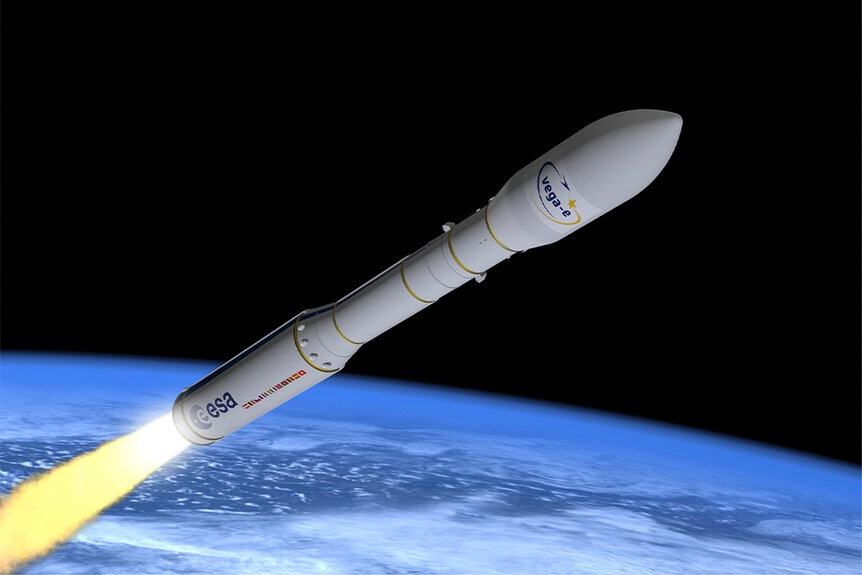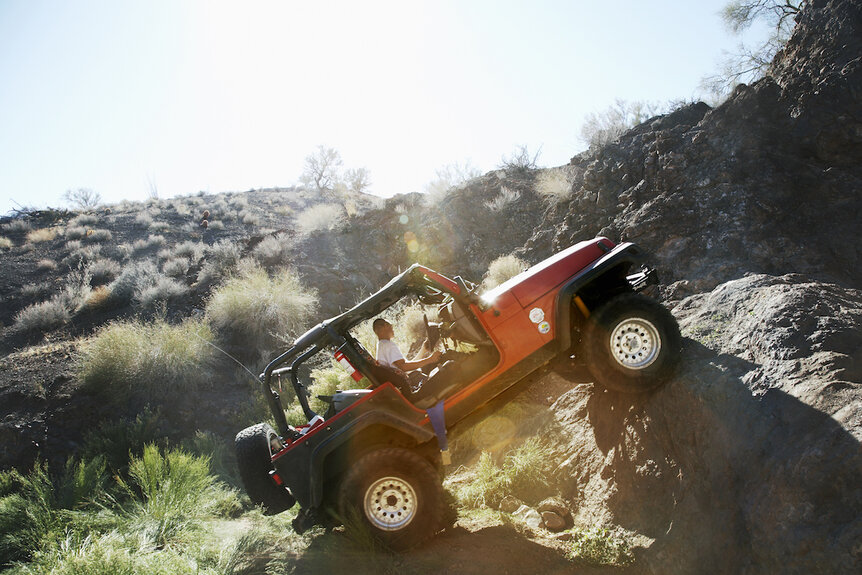Create a free profile to get unlimited access to exclusive videos, sweepstakes, and more!
A Quarter-Mile Straight Up: The Science Behind Fast X's Vertical Race
Ready... set...

The Fast Saga began as a bombastic but wholly grounded action film pitting LAPD police officer Brian O’ Connor (Paul Walker) against Dominic Toretto (Vin Diesel). It’s the ultimate proof that the real criminal underworld is the friends we made along the way.
If it’s been a while since you’ve revisited the franchise’s origins, you might have forgotten that the story which most recently took our heroes to freakin’ space in modified rocket-powered cars began as a fight over the theft of VHS and DVD players. That movie is older than you think it is. There are kids going off to college who don’t remember The Fast and the Furious, because they hadn’t developed object permanence yet. With the release of Fast X racing toward us, we wanted to check in with the franchise built a quarter mile at a time, to see what new stunts it has in store for us and if they stand up scientific scrutiny. Spoiler alert: they probably won’t and, honestly, we wouldn’t have it any other way.
WHERE CAN THE FAST SAGA GO AFTER OUTER SPACE?
It’s a good question, and one fans are probably wondering. After the first movie, it became clear that each new installment would pack even more physics-defying fun than the one before. With each visit to the Toretto found family, viewers expected faster cars, farther jumps, and bigger explosions. That they would eventually go to space began first as a joke, then a foregone conclusion. But that does leave filmmakers with a particular challenge: Once you’ve gone to space, where else can you go?
RELATED: ‘Fast X’ Director Teases ‘Vertical Quarter-Mile’ Stunt in Upcoming Film
That was the question faced by director Louis Leterrier, and he decided to do probably the only thing you could do in that situation. He decided to bring the franchise back down to Earth. “There are many ways of doing quarter-mile races. We’re doing a vertical quarter-mile race, which is very interesting. We’ve landed back on Earth. What we did was go back to the original tone. You have to have stuff that feels real,” Leterrier told Empire Magazine.
Leterrier wasn’t clear on precisely what that meant or how it was achieved. For that, we’ll have to see the movie when it hits theaters May 19. (Get your tickets here!) He was clear, however, that many of the stunts in the movie, including dropping a car from a helicopter onto two other cars, were done practically. Which leaves plenty of room for speculating how Dom and friends will pull off a vertical quarter mile.
MORE ROCKET POWERED CARS?
If you want to get a quarter mile above the ground, the most direct route is straight up. By and large, cars aren’t very good at getting off the ground. You’ve got four wheels and you’re supposed to use every single one of them at all times. Still, if you wanted to launch a car a quarter mile into the air, you could do it. It wouldn’t even be that hard.
Based on what we’ve seen from the trailer, Dom likes a Dodge Charger, so that’s what we’re going to use. Straight off the lot, a 2023 Dodge Charger weighs about 4,000 pounds. It’s possible, even likely, that Dom has made some aftermarket adjustments which could fiddle with that number a little (not to mention the 200+ pounds of pure smoldering muscle sitting in the driver’s seat) but we’re going to let it slide.
The ESA’s Vega rocket is a medium-lift launch vehicle capable of sending up to 4,328 pounds into space. Plenty of punch to get a Dodge Charger and its driver off the ground. It’s pretty small, as far as rockets go, standing only 98-feet (30 meters) tall and it’s definitely overkill. This thing will send Dom into an elliptical orbit around the Earth. We just need to get him a quarter mile off the ground. The bigger problem is that it’s too similar to what we saw the last time around and it doesn’t fit Leterrier’s vision of a more grounded story.
We’re guessing that this vertical race still involves a track of some kind. Whether that track is the sheer face of a cliff, the side of a building, or something else entirely remains to be seen. If we take Leterrier at his word, then we need a car that can climb a sheer surface.
WILL FAST X USE ROCK CRAWLERS TO RACE VERTICALLY?
Most of us prefer that our vehicles remain horizontal, with the ground remaining beneath us and not behind. But a certain population of drivers look at the craggiest, least friendly, most vertical terrains they can find and figure out a way to drive up them.
Rock Crawling is the sort of sport that’s only possible through the marriage of technology, tenacity, and an unwillingness to consider your own demise. Drivers use modified off-road vehicles to climb rock faces that don’t just seem difficult, they seem impossible. At the extreme end of the sport, rock crawlers tackle mountain faces which are almost 90 degrees, straight up. But don’t grab your keys and take your family sedan out to the red rocks for the weekend. These cars can do what they do because of a clear understanding of the environment, the physics, and the engineering involved.
Rock crawlers rely on huge tires, flexible suspension, and a lightweight frame, but that’s just the beginning. Solid axels keep the driver and passenger side wheels bound together, which helps maintain contact with your surface. Because they are locked, if one wheel lifts up, the other drops down. That’s good news if you’re hoping to keep contact on uneven terrain but it doesn’t do you any good if all of your power is being delivered to the wheel in the air.
Most cars use what’s called an open differential. In simple terms, it allows two wheels connected to the same axel to rotate at different rates. That’s important for turning, when the outside wheel needs to travel a greater distance than the inside wheel. It’s awful, however, for climbing. An open differential pays attention to the wheel with less traction and sends more power there while dropping power to the wheel with the most traction. If you’re climbing a vertical face and your wheel comes free of the ground, you don’t want to send all of your power there. Rock crawlers solve this problem by using a locking differential, which sends the same amount of power to both wheels, all the time. As long as you have one wheel on the ground, you can keep moving forward.
The trade off is speed. Rock crawlers are great at climbing nearly vertical surfaces, but they don’t do it quickly. You could feasibly have a quarter-mile nearly vertical race and it would be exciting, but not because of the breakneck speeds.
FAST X WILL PROBABLY BRING THE UNEXPECTED
As Leterrier said, there are many ways of doing quarter-mile races and it’s likely the vertical race we’re going to get will be something wholly unexpected. Maybe the cars will have built-in tracks with rolling suction cup tread. Maybe they’ll be designed like an anti-wing which generates downward pressure once the car gets up to speed, keeping it pressed to a surface.
Maybe the cars’ engines will be connected to a powerful winch that lifts them into the air. It’s a low-tech solution but it could work. Or maybe Dom starts driving across a lift bridge which starts to open as a boat passes through and Dom has to crank the engine and drive straight up like there’s a bomb strapped to bottom of his car and he’s about to dip below 50 miles per hour.
It’s even possible that we’re overthinking the whole thing. Leterrier never mentioned the direction of the race. Driving your cars off a cliff or down the side of a dam is technically a vertical race.
However it happens, Fast X is sure to prove that it’s possible to reach new heights, even when you’re back on the ground.
Fast X hits theaters May 19, 2023. Get your tickets here!
Relive a small portion of the Fast Saga with Furious 7 and F9 — streaming now on Peacock. If you want to catch up on the full story, however, click right here for our nifty guide on where to stream the first nine installments (plus Hobbs & Shaw).




























